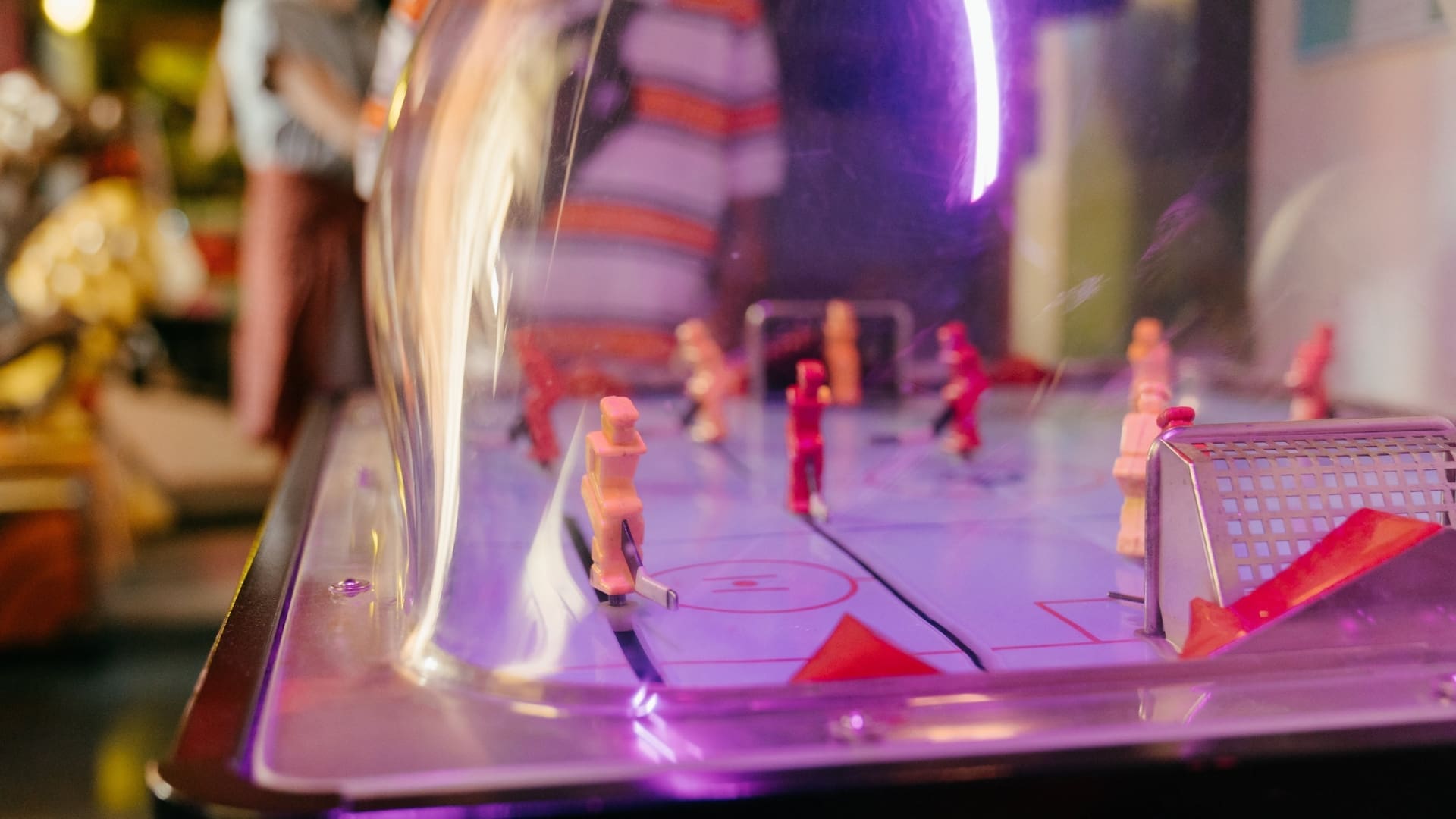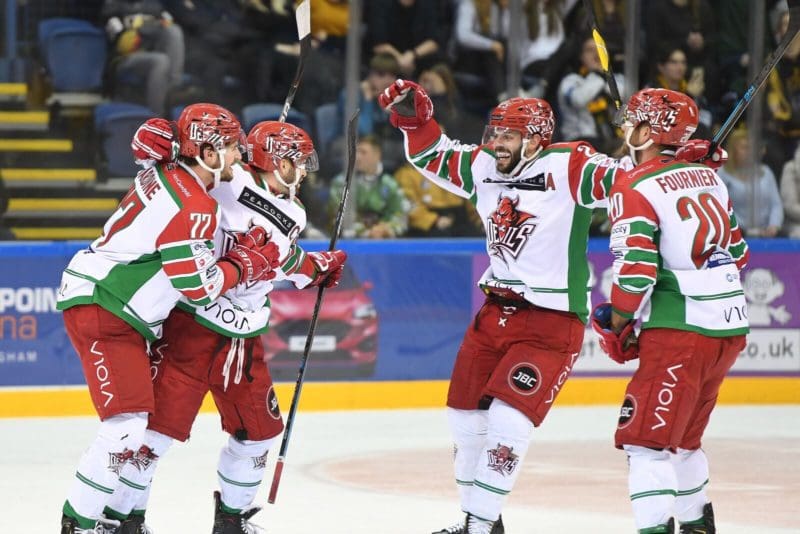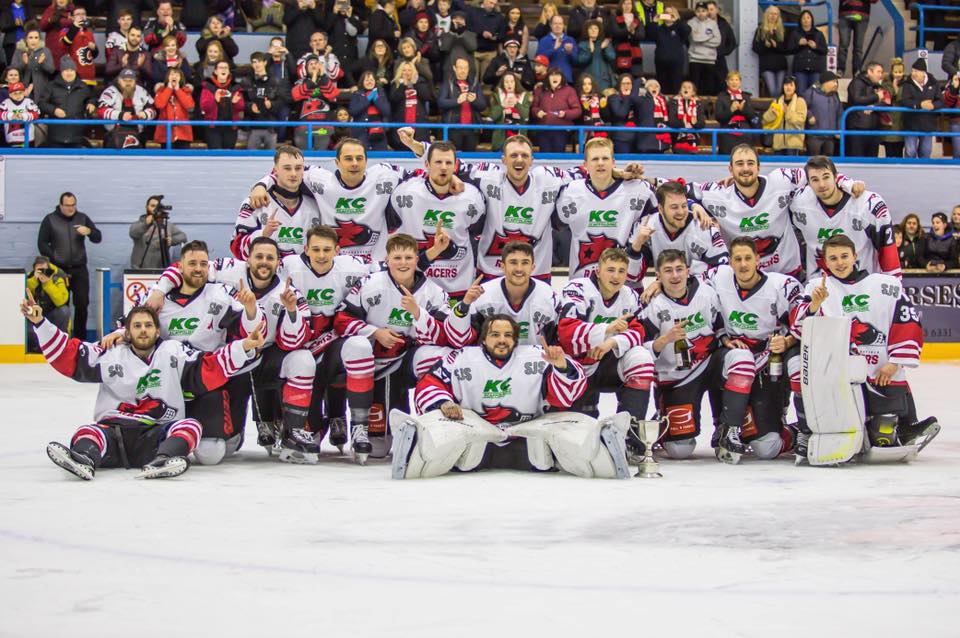
Hockey is exciting – the roar of the crowd, the clash of sticks, the whoosh of skates, players bashing against the boards, and the lightning-fast puck sliding across the rink. Thriving on adrenaline, strategy, and natural skill, it’s a sport that has many hooked.
As fans, we long for the chance to experience the rush of a breakaway, score an unforgettable goal, and hoist the Stanley Cup over our heads in celebration – and EA’s (Electronic Arts) NHL games have allowed us all to do all of that and more.
Affectionately known as ‘Chel,’ we’ve seen the game evolve from the pixelated play of the early ‘90s to the hyper-realistic simulations of 2024, making it almost difficult to distinguish from watching a real game on TV.
Early Beginnings
In the preliminary stages of the franchise, NHL games embraced what many early ‘90s games did: simplistic 16-bit play. The first-ever instalment of the game, NHL Hockey, was released on the Sega Genesis. As more instalments of the game were eventually developed, gamers could play them on the SNES, Game Boy, PC, N64, and PlayStation 1.
The gameplay was straightforward and limited; passing, shooting, and checking were the only few actions gamers could control, and players on screen were represented by basic nameless sprites. But the simplicity was just part of the charm – as it often is when we look back at retro gaming. Along with graphical constraints, there was also limited sound technology, which meant plenty of beeping and booping that made up the soundscape of a hockey game.
Nevertheless, these early NHL games still managed to capture the essence of the sport.
NHL 97: The Introduction of 3D Graphics and Multiplayer Online
As the mid-1990s approached, EA finally introduced two things that would revolutionize both graphics and gameplay: 3D graphics and the multiplayer online feature. The modern era of virtual hockey was here – players weren’t just sprites anymore; they took on realistic polygonal dimensions, which fostered smoother animations and more detailed movement. The overall environment of the rink gave the game a much more dynamic environment.
Beyond the visuals, NHL 97 also embraced online multiplayer gaming, allowing for a community of hockey fans to play against each other without having to be in the same room. Gamers were now able to expand their horizons beyond traditional sports simulations, which foreshadowed the rise of online gaming experiences such as global tournaments, playing real money slots from casinos.com, and exploring virtual worlds with friends.
NHL 99: A Milestone in the NHL Franchise
While NHL 95 introduced line fatigue, NHL 96 gave players a visual name tag on the ice as you passed to them, and NHL 98 was the first to bring in commentary – there was no NHL instalment quite like NHL 99. As the precursor game to the new millennium too, NHL 99 certainly sang its own praises even in comparison to NHL 98.
One of the most substantial added features was a career mode (what we now know as ‘Franchise’ mode) with real-life simulations like drafting, player trading, and a retirement feature. It was also the first game to feature fully licensed music from artists, including David Bowie and Jeff Van Dyck. That led to the development of EA Trax (EA’s own soundtrack) for NHL games.
The New Millennium: The Innovation Continues
When it came to NHL 2000 and NHL 2001, there was a pause in innovation. No major breakthroughs came about until NHL 2002, where developers seemed to focus more on injecting that realism through improved physics, better player models, more detailed arenas, and realistic cutscenes. In NHL 07, many more realistic gameplay features were introduced, notably in stickhandling, where the Skill Stick Revolution feature allowed gamers to use different types of dekes and shots.
NHL 10 marked the start of the 2010s and the start of a decade of remarkable advancements in the franchise. In that one instalment alone, we saw intimidation tactics, 360-degree precision passing, better goalie intelligence, and shiny new modes such as the ‘Be a GM Mode’ and ‘Battle for the Cup Mode.’ Things were becoming more and more sophisticated, thanks to the power of more advanced gaming consoles.
The 2010s and Beyond: Pushing the Boundaries of Realism
Then, the late 2010s unfolded, and NHL instalments continued to push the boundaries and compound on top of the games we had in previous years. NHL 19 brought in ‘Real Player Motion Technology,’ which offered a much-improved skating experience and was able to differentiate player skating style. For example, Kane’s quick-stepping and McDavid’s crossover manoeuvres and edgework. It also introduced the ‘World of Chel’ mode for diverse multiplayer experiences and customizable tournaments.
Today, playing a game of NHL is like transporting yourself onto the ice of a sold-out arena. Every pass, shot, and check has its own consequences or benefits, and every single detail is meticulously designed to replicate a real-life hockey game.
In the newest instalment of NHL – NHL 24 – the game celebrates both men’s and women’s hockey, maintaining that inclusivity and representation that we saw in NHL 23. With the Vision Passing System allowing for more direct passes and Physics-Based Contact disrupting momentum with revolutionary physical contact, there’s a heightened level of authenticity, with top-notch physicality, pressure, and control.
Tracking EA’s NHL franchise from its humble beginnings to its realistic simulations today, it’s clear that the series has gone through an extraordinary transformation. Across three decades, we’ve seen it evolve in leaps and bounds, finally delivering a true-to-life hockey experience that shows off exactly what graphics and gameplay can look like in the new era.









